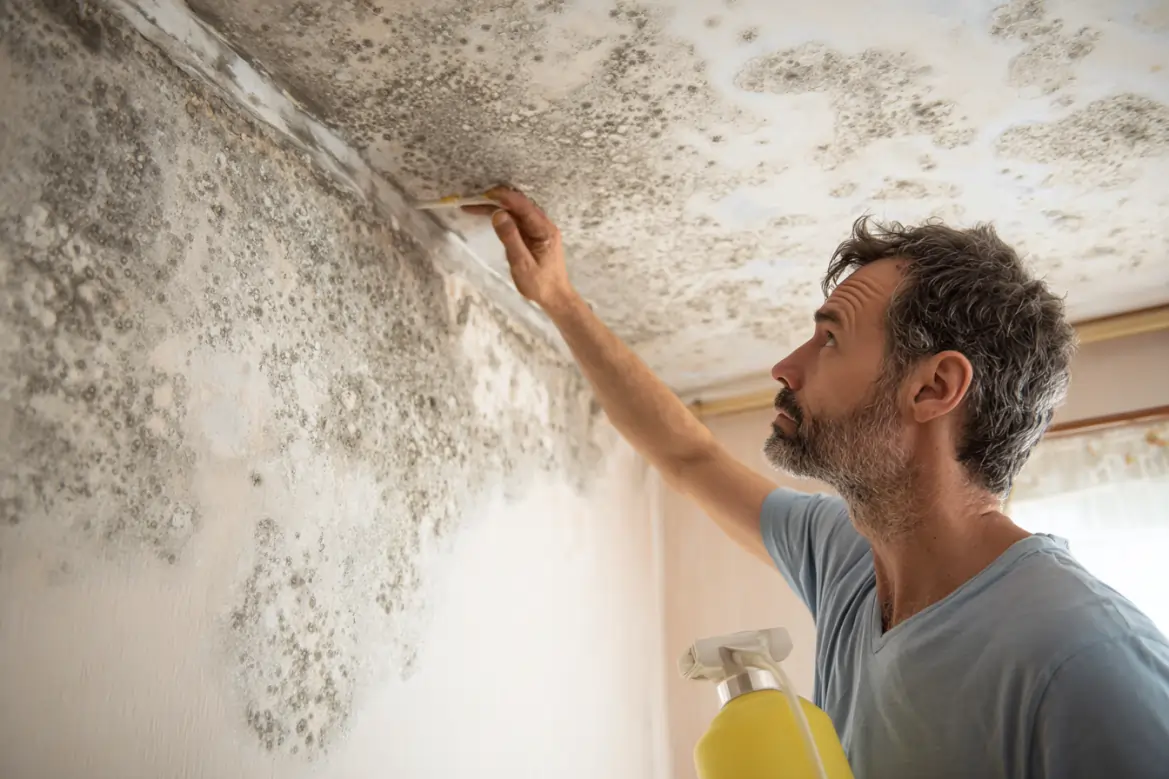
When Hurricane Elias roared through Florida’s east coast, the Alvarez family thought they had weathered the worst. Their home in a quiet suburban neighborhood survived the high winds and driving rain with only a few missing shingles and some downed tree branches.
But as the days passed and the sun returned, another storm was quietly brewing inside their walls—mold.
The Calm After the Storm
In the first 48 hours after the hurricane, Carlos and Elena Alvarez were busy cleaning up the yard, patching roof damage, and checking in on neighbors. Their children, Isabella and Mateo, were relieved to return to normal routines after days in a storm shelter.
At first glance, the house seemed fine. But Elena noticed a faint musty odor near the living room. By the end of the week, black streaks appeared on the drywall near the baseboards, and Isabella began coughing more at night.
“I thought we had gotten lucky,” Elena recalled. “Then I realized the storm wasn’t done with us.”
Discovering the Mold
Carlos climbed into the attic and found insulation soaked from rain blown in through roof gaps. Downstairs, water had seeped into the walls through small leaks. With the power out for days after the storm, the air conditioner hadn’t been running, leaving humidity to climb.
Mold had taken hold.
Elena called their insurance company, who recommended a professional inspection. Within 24 hours, a local Florida mold remediation team arrived.
The inspector walked through with a moisture meter, probing walls and ceilings. He found mold in the attic, behind drywall, and even inside the HVAC ducts.
“You caught this early,” he told the Alvarezes. “But in this climate, mold grows fast. If we don’t act now, it’ll spread everywhere.”
The Mold Removal Process
The crew began the very next day.
Containment
They sealed off affected rooms with plastic barriers and negative air machines to keep spores from spreading.
Removal
Contaminated drywall, carpet, and insulation were cut away and bagged for safe disposal.
Air Filtration
HEPA filters scrubbed spores from the air while industrial dehumidifiers dried the house.
Cleaning
Wood framing and concrete were scrubbed with antimicrobial solutions to kill mold at the root.
Restoration
Finally, contractors replaced drywall, repainted, and sealed the attic to prevent future leaks.
For the Alvarezes, watching parts of their home being stripped away was stressful—but seeing the restoration begin gave them hope.
The Emotional Toll
Beyond the visible damage, mold took a psychological toll on the family. Elena worried constantly about her children’s health. Carlos lost sleep wondering if insurance would cover the costs.
Neighbors told similar stories. In the weeks after the hurricane, nearly every house on their street had contractors’ trucks out front, drying out walls and treating mold infestations.
“It felt like the whole community was battling the same invisible enemy,” Carlos said.
Lessons Learned
Through their experience, the Alvarezes discovered valuable lessons about living in Florida’s storm-prone climate:
-
Time is critical. Mold can begin growing within 24–48 hours after water intrusion. Immediate drying and inspection are essential.
-
Prevention pays. Sealing roof flashing, maintaining gutters, and fixing minor leaks can prevent stormwater from getting inside.
-
Air conditioning matters. Losing power means losing dehumidification. Backup generators can help prevent mold after storms.
-
Insurance navigation is tricky. Documenting damage with photos and professional reports helps secure coverage.
-
Professional help is worth it. DIY cleaning can’t reach hidden mold inside walls and HVAC systems.
Moving Forward
Two months later, the Alvarez home was back to normal. The walls were freshly painted, the air smelled clean, and Isabella’s cough had disappeared.
But the family didn’t just repair—they prepared. They installed a backup generator to keep their AC running during outages, added dehumidifiers, and scheduled regular mold inspections.
“Now we know mold is part of life in Florida,” Elena said. “But it doesn’t have to take over your home if you stay ahead of it.”
Mold and Florida’s Coastal Reality
The Alvarez story is far from unique. From Miami to Jacksonville, Pensacola to Naples, mold is one of the most common and costly problems homeowners face after hurricanes and tropical storms. Florida’s mix of humidity, rain, and seasonal flooding creates conditions mold loves.
Whether it’s a waterfront condo, a suburban ranch, or a historic home near downtown, no property is immune. That’s why professional mold removal and prevention have become as much a part of Florida living as hurricane shutters and sandbags.
Final Thoughts
Hurricanes may pass in hours, but their effects linger. For Florida families, mold is often the hidden aftermath—growing silently in walls, ceilings, and HVAC systems long after the wind dies down.
The Alvarez family’s story shows that with quick action, professional remediation, and preventive steps, it’s possible not only to recover but to come back stronger.
In Florida, where storms are inevitable, mold doesn’t have to be. With preparation and local expertise, homeowners can protect their health, their homes, and the peace of mind that makes coastal living worth it.
Because when the next storm comes—and it always does—Floridians know they can weather not just the wind, but the aftermath too.